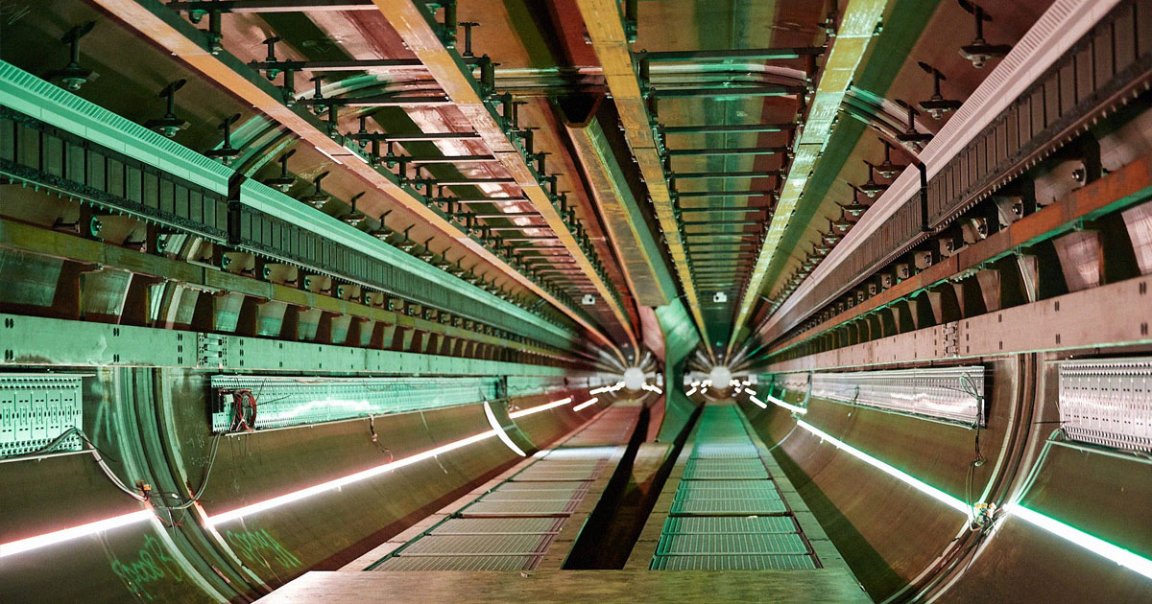
While researchers have encountered major headwinds in turning the Hyperloop into a reality, the European Hyperloop Center is still hoping to open the first functional tube by the end of the decade.
The nonprofit foundation has opened a new quarter-mile test tube made out of white steel segments, running alongside a railroad track in the northern Netherlands. It even includes a lane switch that splits the tube into two, an early experiment that could eventually inspire a way to connect a network of tubes.
The concept, as dreamed up by Tesla CEO Elon Musk over a decade ago, involves ferrying passengers and cargo through low-pressure tubes at roughly twice the speed of high speed rail, greatly cutting down the time to travel between cities.
“I expect by 2030 you will have the first Hyperloop route, maybe [three miles] in which people will actually be transporting passengers,” European Hyperloop Center director Sascha Lamme told the Associated Press. “Actually there’s already preparations being done for such routes in for example Italy or India.”

Despite the optimism, companies have struggled to stay afloat while developing the idea into a reliable new mode of transportation. Lamme was likely referring to Hyperloop Italia, which recently entered a joint venture with Hyperloop Transportation Technologies to construct the “world’s first commercial hyperloop system in Italy,” and an Indian technological university that signed a deal with a steel producer to build a test track.
But whether either of these loops will ever get built remains to be seen. Commercial viability has remained a major sticking point, with investors balking at the considerable costs involved. Since Musk highlighted the idea in his “Hyperloop Alpha” white paper just over ten years ago, no functional Hyperloop has yet to be built.
Case in point, Hyperloop One, which was founded in 2014 and rebranded as Virgin Hyperloop One in 2017 by Virgin CEO Richard Branson, shut down in October. Virgin had already yanked its branding and pivoted to carrying cargo and not passengers in early 2022, laying off half its staff.
However, other companies like the California-based Hyperloop Transportation Technologies, which has four prototypes in the works, are still optimistic, with plans to connect Cleveland and Chicago with a loop by the end of the decade.
Critics, on the other hand, argue it’s an unnecessary and far too expensive bandaid solution (we’re looking at you, Boring Company).
“This is just another example of policy makers chasing a shiny object when basic investment in infrastructure is needed,” Rutgers University transportation policy researcher Robert Noland told the AP. “It costs too much to build.”
In a press release, however, the European Hyperloop Center claimed that the Hyperloop is “estimated to be cheaper compared to high speed rail” and that integration of the Hyperloop is “deemed easier compared to other types of infrastructure.”
Nonetheless, raising enough cash to actually build a loop that connects two European destinations is still a major roadblock for the non-profit.
“Really the main challenge is finding government commitments to build routes and, on the other hand, finding new funding to realize the necessary test facility and technology demonstration that you need to do to make this happen,” Lamme told the AP.
More on the Hyperloop: The Hyperloop Is Dead. Long Live the Hyperloop.